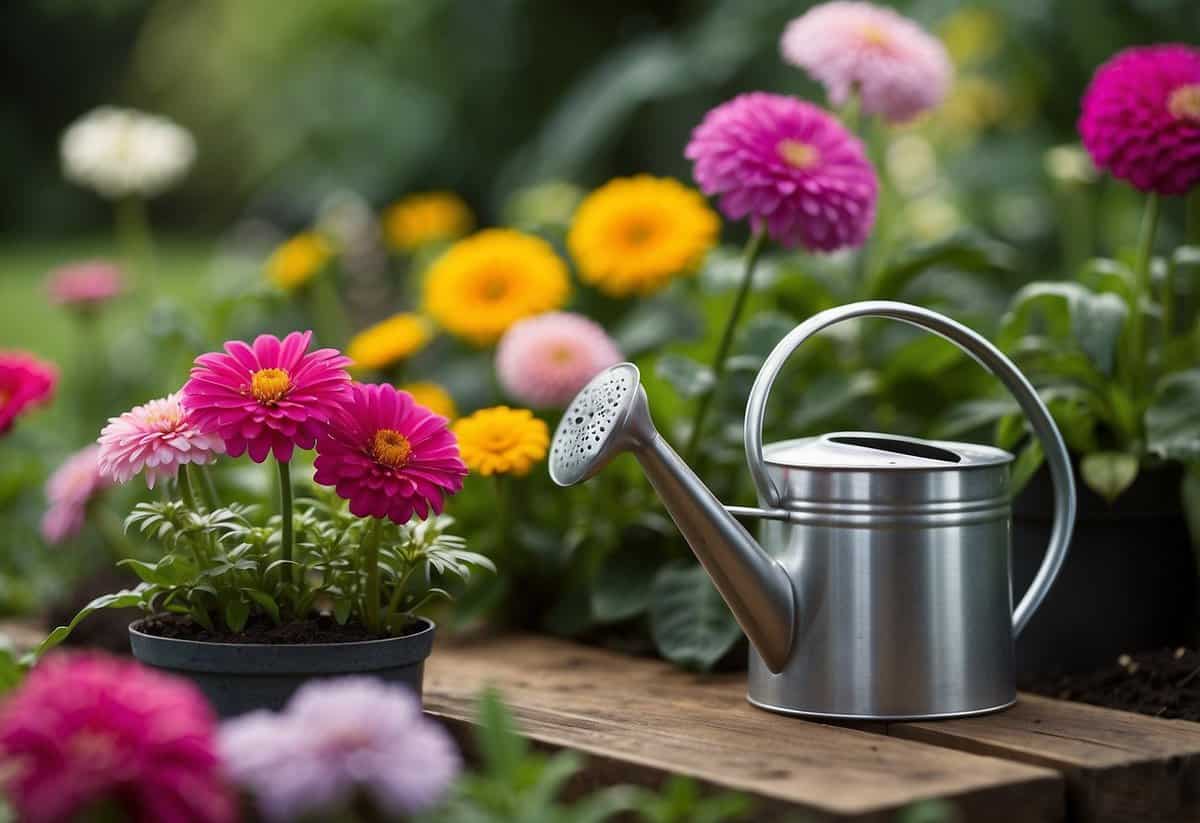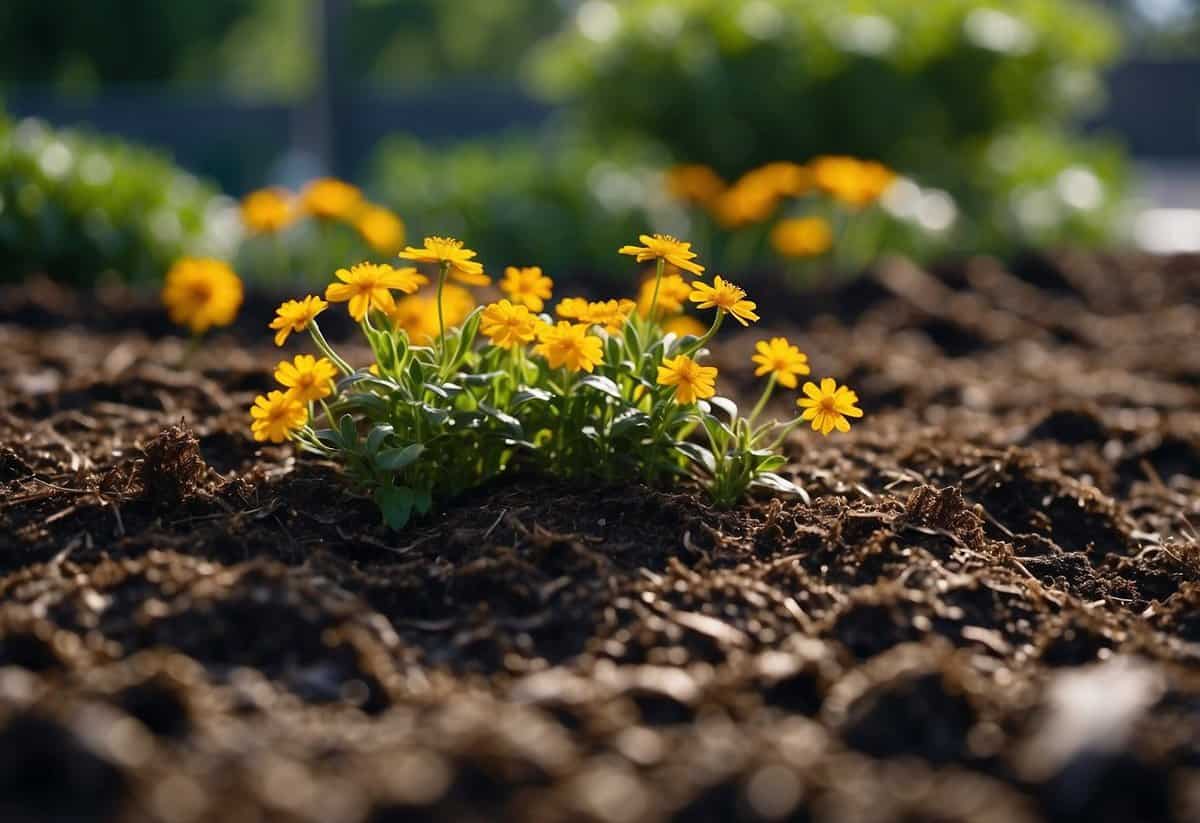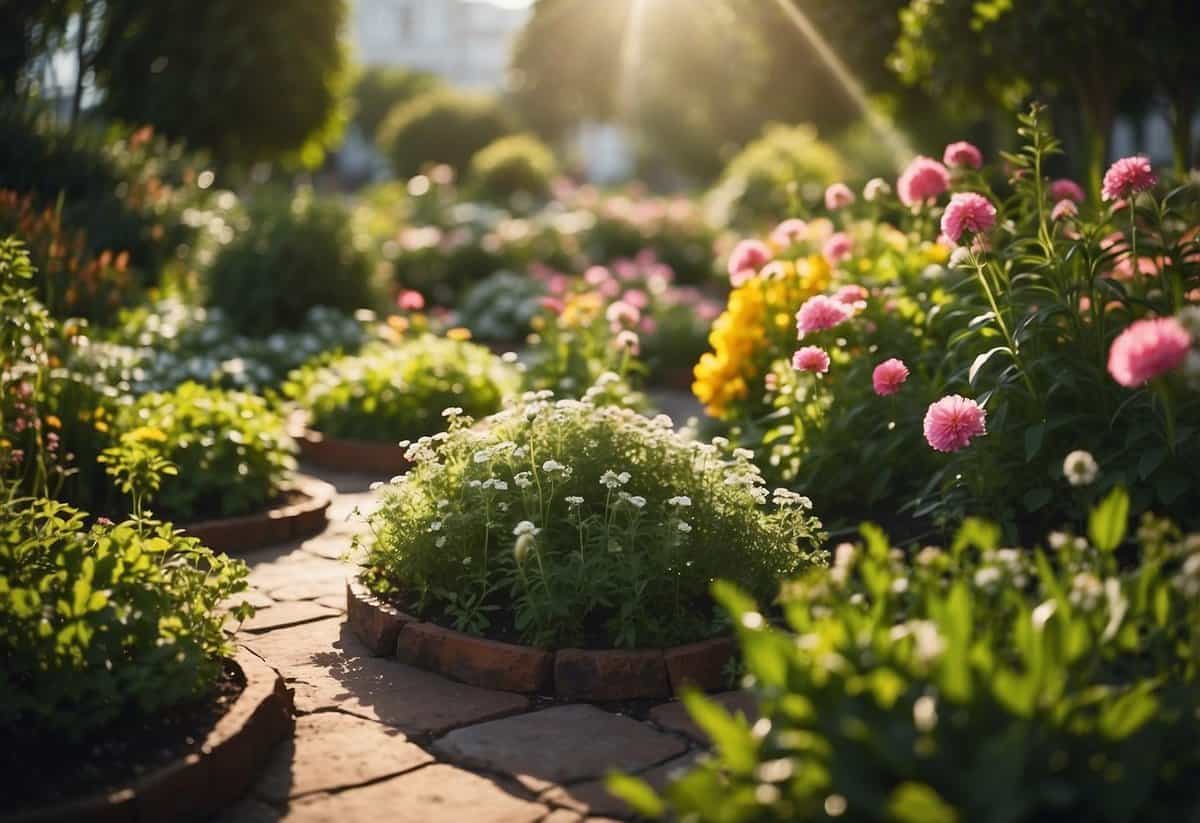Flower Garden Tips for Beginners: Cultivate a Blooming Paradise
Starting a flower garden can be a fun and rewarding experience. Whether you have a big backyard or just a small space, creating a beautiful garden is possible. You don’t need a green thumb to get started, just some basic knowledge and a bit of patience.

Learning a few key tips can make all the difference for new gardeners. From choosing the right spot to picking the best flowers for your area, these tips will help set you on the path to a flourishing garden.
1) Choose Native Plants

Choosing native plants for your garden is a great way to ensure they thrive. These plants are adapted to your local climate and soil, making them easier to care for.
Consider planting oak trees, which support various insects and birds.
Starting with native shrubs like spicebush or chokeberry can provide structure and year-round interest.
Consult local nurseries or botanical gardens to find the best native plants for your area.
2) Plan Your Layout

First, select a sunny spot with good drainage. Flowers generally love sunlight, so it’s important to choose a well-lit area.
Next, decide on the shape of your garden. Use a garden hose or rope to outline the area. Keep the edges smooth for easy mowing.
Think about the height and color of your flowers. Plant taller flowers in the back and shorter ones in the front for a layered look.
Mark the spots where you want each type of flower. This helps you visualize the final layout before planting.
3) Start with Perennials

Perennials are a great choice for beginner gardeners. They come back year after year, which saves you time and effort.
Pruning perennials regularly helps them stay tidy and encourages more blooms. Aim to prune at least once a month. This keeps your garden looking its best.
When choosing perennials, look for ones that are suited to your local climate. This will make them easier to grow and maintain. For more tips on growing perennials, visit this guide. Happy gardening!
4) Use Quality Soil

Your flower garden will thrive if you start with quality soil.
First, test your soil’s pH and nutrient levels. This helps you understand what your soil needs and what it has too much or too little of.
Add organic matter like compost to improve soil fertility. Remove rocks, weeds, and debris to give your flowers the best environment to grow. Ensuring good drainage is also key, as most flowers don’t like soggy roots. Quality soil sets the foundation for a beautiful and healthy garden.
5) Water Wisely

Water your flower garden in the early morning or late evening to reduce evaporation. This helps the soil absorb water better and keeps your plants hydrated.
A rain barrel is a great tool to collect and store rainwater. It can save you money and make watering more sustainable.
Make sure not to overwater. Too much water can lead to root rot. Check the soil moisture regularly to avoid this problem.
6) Mulch to Retain Moisture

Using mulch is a great way to keep your garden soil moist. Mulch helps prevent water from evaporating by covering the soil. It also protects plant roots from harsh sunlight.
Spread an even layer of mulch around your plants. This keeps the soil cool and reduces the need for frequent watering.
Remember to keep mulch away from plant stems to avoid rot. Organic mulches like wood chips, straw, or compost work best as they break down and enrich the soil. For more tips, visit Bob Vila’s guide.
7) Prune Regularly

Pruning is key to keeping your garden healthy. Regular pruning encourages your flowers to grow well. It helps them look good too.
When you prune, focus on removing dead or weak parts of the plant. This lets your flowers put energy into growing strong and healthy parts.
Different plants need pruning at different times. Some are best pruned after they flower, while others should be done in winter. Make sure to find out what your plants need before you start. Detailed guidance can be found in this pruning guide.
Remember to always cut at an angle. This helps water run off and prevents disease. Start with small cuts and avoid removing more than one-third of the plant at a time. More tips are available on Epic Gardening.
8) Incorporate Pollinator Plants

Adding pollinator plants to your garden helps attract beneficial insects like bees, butterflies, and hummingbirds.
Choose plants that bloom at different times to provide nectar throughout the growing season. Include a variety of colors and flower shapes to appeal to different pollinators.
Native plants are especially effective, as they are well-adapted to your local environment and support local wildlife.
For more detailed guidance, check out these tips for building a pollinator garden.
9) Label Your Plants

Labeling your plants helps you remember what you planted and where. Use durable, weather-resistant materials for your labels so they can withstand rain, wind, and sun.
Stick labels into the ground near each plant. Write clearly with a permanent marker to ensure the names don’t fade. You can buy plant labels or make your own from materials like popsicle sticks or old spoons.
Remember to label both the plant name and the date you planted it. This will help you keep track of their growth and care needs over time.
10) Install a Drip System

A drip system makes watering your flower garden easy. It saves water and ensures your plants get just the right amount.
First, connect the mainline poly tubing to your water source with a garden hose. After that, punch holes in the tubing where you want to add drip lines.
Attach micro tubing and sprinkler heads to the holes. Place the sprinkler heads near your plants. Secure them with stakes for stability.
For detailed guidance, you can follow these step-by-step instructions. A drip system helps keep your flower garden healthy and vibrant.
Understanding Your Garden Space

Knowing your garden’s soil quality and sunlight exposure is key to a successful flower garden. These details help you choose the right plants and ensure they thrive.
Assessing Soil Quality
First, check your soil’s composition. Use a simple test kit to learn about your soil’s pH level and nutrients. Most flowers prefer soil with a pH of 6.0 to 7.0.
Next, assess drainage by digging a small hole and filling it with water. If the water drains too quickly or too slowly, you may need to improve the soil’s texture. Adding compost can enhance nutrient content and help with drainage.
Observing soil type is also crucial. Sandy soils drain quickly but may lack nutrients. Clay soils hold water well but can become compacted. Loamy soil is ideal due to its balanced texture and fertility.
Analyzing Sunlight and Shade
Sunlight exposure greatly impacts plant health. Start by spending a day watching how sunlight moves across your garden.
Note which areas get full sun (6+ hours), partial sun (3-6 hours), and full shade (less than 3 hours). This will guide you in selecting plants that match these conditions.
Use tools like a sun calculator to track light patterns more precisely. Also, be aware of how nearby structures, trees, or buildings may cast shadows affecting your garden’s light exposure.
Understanding these patterns helps you place each plant in its optimal growing spot, ensuring your garden flourishes.
Choosing the Right Flowers

Selecting the right flowers involves understanding the difference between annuals and perennials and considering the benefits of native plants. Knowing these details can help you make informed decisions for a vibrant and healthy garden.
Annuals vs Perennials
Annuals complete their life cycle in one growing season, which means you need to plant them every year. They often have bright, showy flowers and can add quick color to your garden. Examples include marigolds and zinnias. Because they bloom for a long period, they are perfect for filling in gaps in a new garden.
Perennials, on the other hand, live for more than two years. After planting, they return each spring, which reduces the need for yearly planting. Examples of perennials include daylilies and hostas. They might not bloom as long as annuals, but they grow larger and stronger with each passing year, making them a durable choice for consistent beauty.
Mixing annuals and perennials can give you the best of both worlds. Annuals can provide immediate color, while perennials establish a long-term foundation.
Native Plants and Their Benefits
Native plants are those that naturally occur in your region. They are adapted to the local climate, soil, and wildlife, which makes them easier to grow and maintain. Coneflowers and black-eyed Susans are examples of native plants in many regions.
One of the main benefits of native plants is their low maintenance. They require less water, fertilizer, and pesticides because they thrive in local conditions. This makes them environmentally friendly choices. Additionally, native plants support local ecosystems by providing habitat and food for wildlife like birds and butterflies.
By choosing native plants, you can create a beautiful and sustainable garden. They are not only easier to care for but also support biodiversity and reduce the need for chemical intervention.
Tips for Planting and Maintenance

Getting started with planting and keeping your flower garden healthy involves using the right techniques, ensuring proper watering, and taking care of soil health.
Planting Techniques
When planting flowers, the first step is to pick the right location. Look for an area with good sunlight and proper drainage. Use a garden hose or rope to lay out the shape of your garden. Make sure it’s easy to mow around.
Once your layout is ready, start digging. If you’re unsure about buried utility lines, call Dig-Safe at 811. This ensures that you won’t damage any utilities. After digging, test the soil to check its composition and fertility. You can find soil testing kits at local garden stores.
Place each flower in a hole that’s twice as wide and deep as the root ball. This gives the roots plenty of room to grow. Gently pat the soil around each plant to remove air pockets and secure the roots.
Watering Best Practices
Proper watering is key to a thriving garden. Water your flowers early in the morning or later in the evening. This helps prevent water from evaporating too quickly in the sun.
Use a soaker hose or drip irrigation for efficient watering. These methods deliver water directly to the roots, reducing waste. Avoid watering the leaves to prevent fungal diseases. The soil should be moist but not soggy.
Check the soil moisture regularly. Stick your finger about an inch into the soil—if it feels dry, it’s time to water. Consistency is important, especially during dry spells. Deep and less frequent watering encourages deep root growth, making plants more resilient.
Mulching and Fertilizing
Mulching helps retain soil moisture and suppress weeds. Apply a 2-3 inch layer of organic mulch, such as bark chips or straw, around your plants. Keep mulch a few inches away from the plant stems to prevent rot.
Fertilizing provides essential nutrients for growth. Begin with a soil test to determine what nutrients your soil lacks. Use a balanced, slow-release fertilizer to avoid over-fertilizing. Apply fertilizer in early spring and mid-summer for best results.
Organic options like compost or manure can improve soil structure and provide nutrients. Lightly mix them into the top layer of the soil before planting. Regularly check your plants for signs of nutrient deficiencies, like yellowing leaves, and adjust fertilization as needed.







